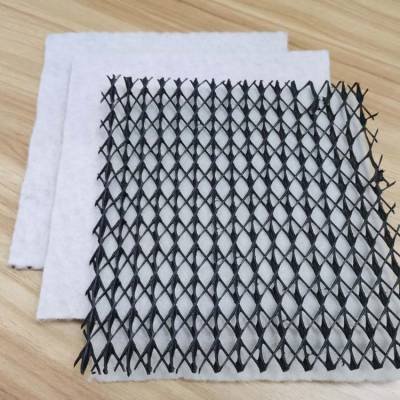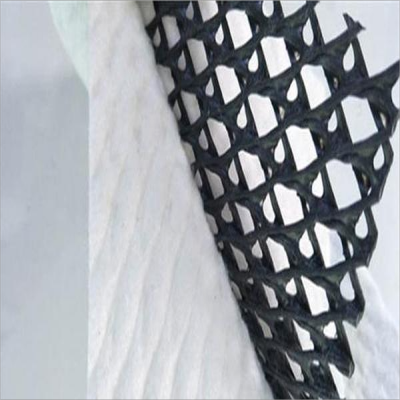Composite drainage network is a material commonly used in road projects, landfills, underground space development and other projects. So, what are its advantages and disadvantages?
一. Core advantages of composite drainage network
1、Excellent drainage performance
The composite drainage net adopts a three-dimensional mesh core structure (the thickness is usually 5-8 mm), The middle vertical rib forms a continuous drainage channel with the inclined support, and the drainage efficiency is 5-8 times that of the traditional gravel layer. Its pore maintenance system can withstand high loads (3000 kPa Compressive load) maintains stable hydraulic conductivity, and the displacement per unit time can reach 0.3 m³/m²,It is especially suitable for special geological conditions such as frozen soil areas and soft foundation treatment.
2、High strength and deformation resistance
Composed of high density polyethylene ( HDPE) The mesh core compounded with polypropylene fiber has two-way tensile strength of 20-50 kN/m, The compressive modulus exceeds that of traditional geogrid by more than 3 times. In the actual measurement of heavy-duty traffic sections, the settlement of subgrade laid with composite drainage network is reduced by 42%, and the incidence of pavement cracks is reduced by 65%.
3、Multifunctional integrated design
Through geotextile (200 g/m²Standard) and the composite structure of the three-dimensional mesh core simultaneously realizes the triple functions of “reverse filtration-drainage-reinforcement”:
(1)Effective interception particle size of the upper layer non-woven fabric >0.075mm Soil particles of
(2)The mesh core quickly exports permeable water to prevent capillary water from rising
(3)Rigid ribs enhance foundation bearing capacity and reduce subgrade deformation
4、Environmental adaptability and durability
The acid and alkali resistance range of the material is up to pH 1-14, At-70 ℃To 120 ℃The temperature range keeps the performance stable. After 5000 hours of UV accelerated aging test, the strength retention rate >85%,The service life can reach more than 50 years.

二. Application limitations of composite drainage network
1、Insufficient puncture resistance
The mesh core thickness is generally 5-8 mm, Easily pierced on the base surface containing sharp gravel.
2、Limited water purification capacity
Under high-speed water flow conditions (velocity >0.5m/s), For suspended solids ( SS) The interception efficiency is only 30-40%, and it should be used with sedimentation tanks or filter layers in sewage treatment projects.
3、Strict construction technology requirements
(1)Base plane flatness should be controlled ≤15mm/m
(2)Lap width requirement 50-100 mm, Adopt special hot melt welding equipment
(3)The ambient temperature must be-5 ℃To 40 ℃Between, extreme climate can easily lead to material deformation
4、Higher initial investment cost
Compared with the traditional sand and gravel drainage layer, the material cost increases by about 30%, but the whole life cycle cost is reduced by 40% (reducing maintenance frequency and foundation repair rate).
三. Engineering application
1、Optimization scheme of municipal road
In the asphalt pavement structure, laying the composite drainage network between the graded macadam layer and the subgrade can shorten the drainage path to the thickness of the base layer and improve the drainage efficiency.
2、Landfill anti-seepage system
Adopt “composite drainage network” +HDPE Impervious membrane “combined structure:
(1)Drainage network guides leachate, permeability coefficient ≤1×10⁻⁴cm/s
(2)2mm Thick HDPE Membrane provides double anti-seepage protection
3、Sponge city construction project
Three-dimensional laying in rain gardens and sunken green spaces, cooperating with PP The use of modular reservoirs can reduce the runoff coefficient from 0.6 to 0.3 and alleviate urban waterlogging.
Post time: Mar-20-2025




